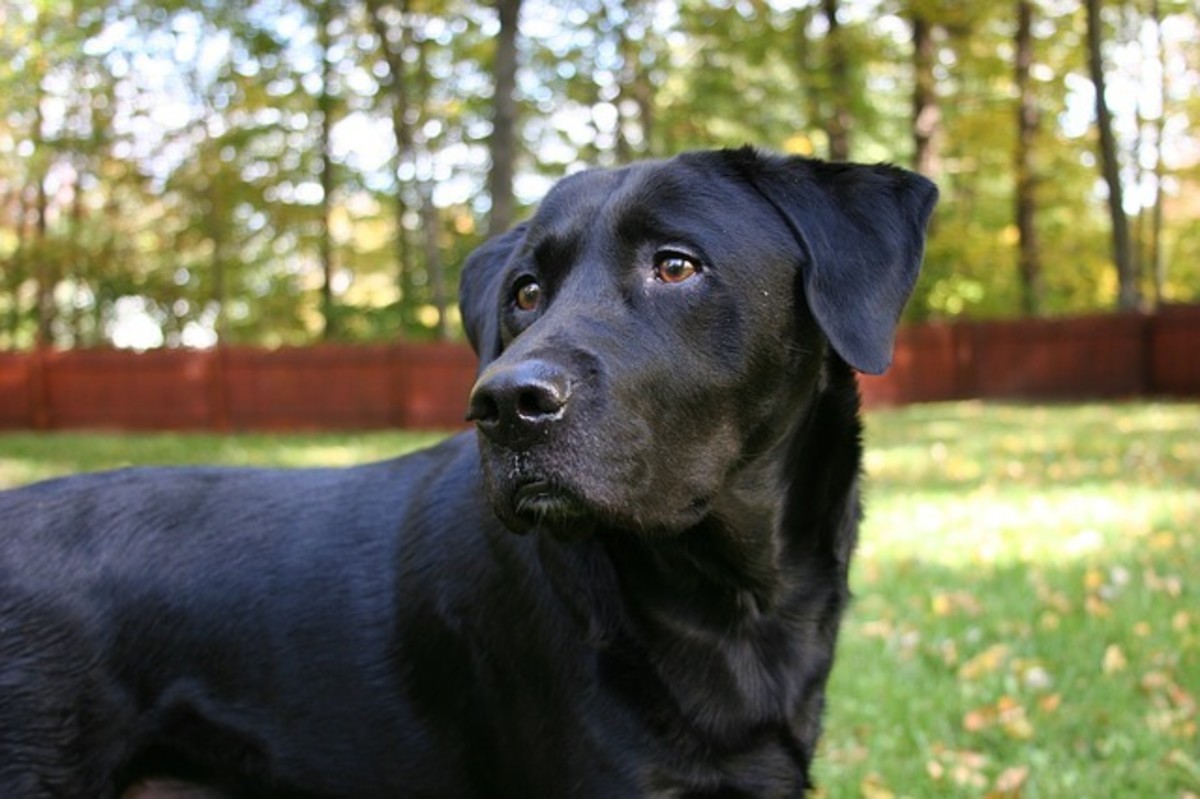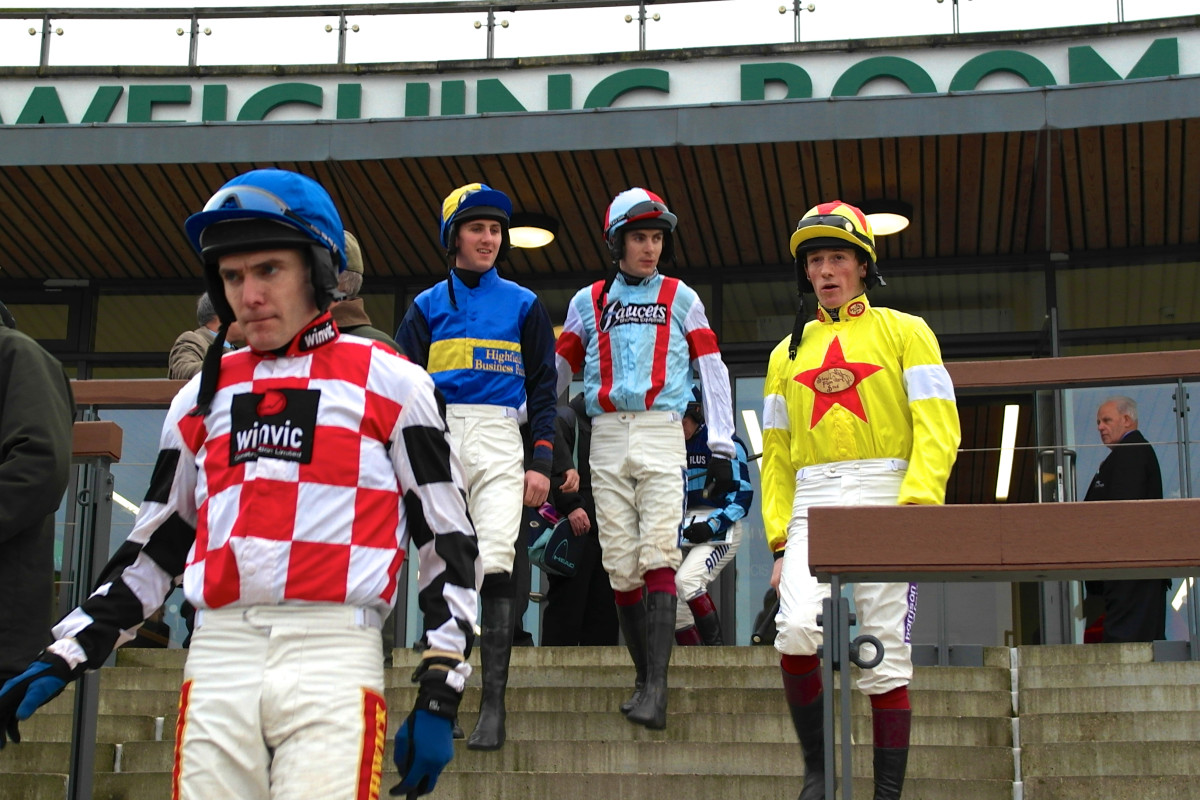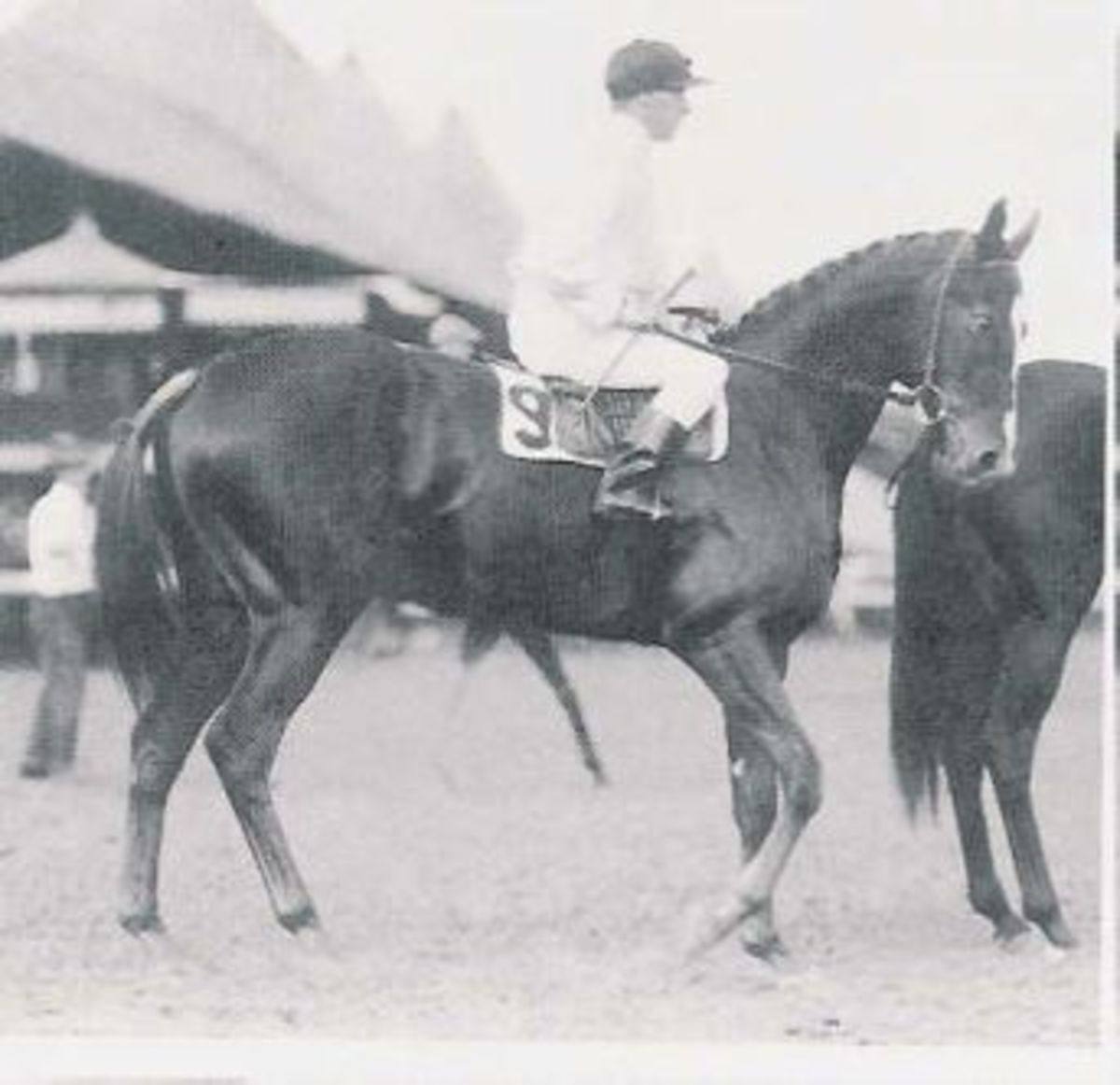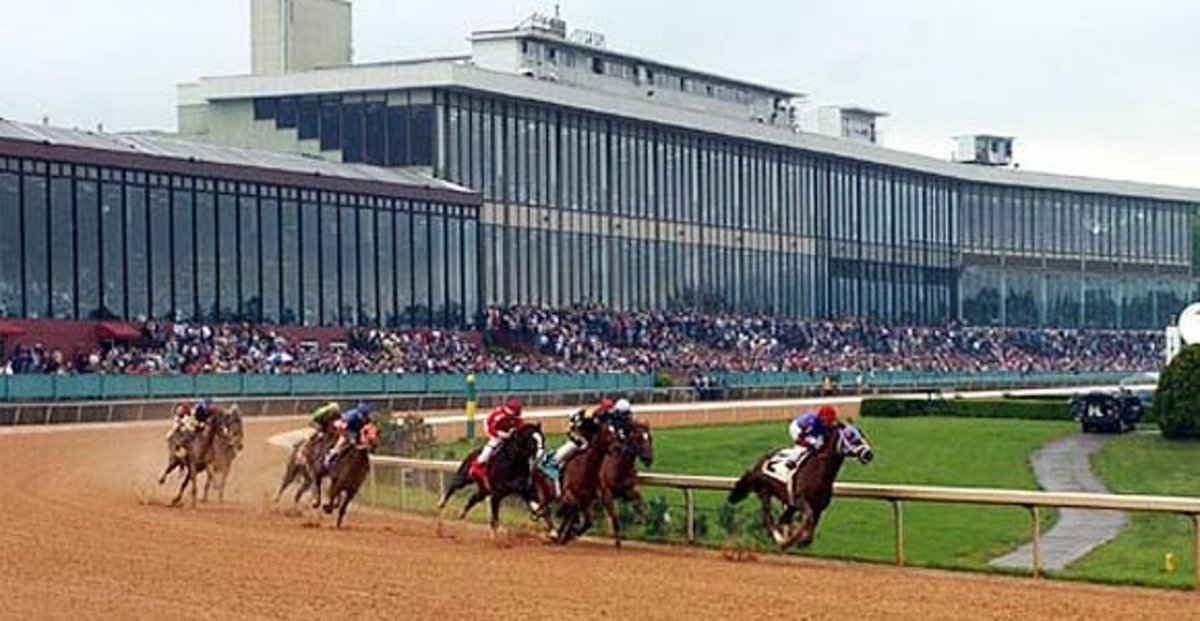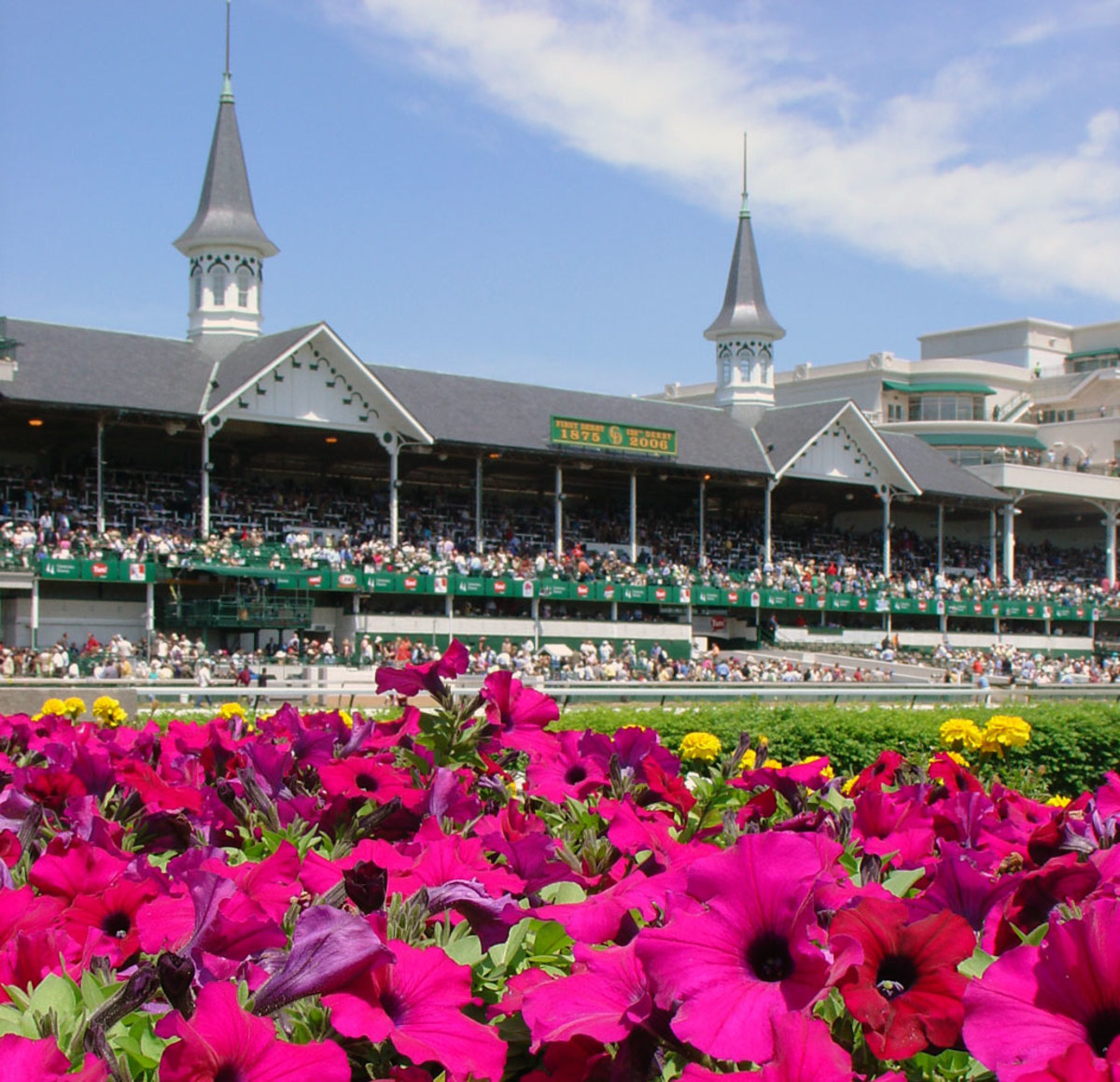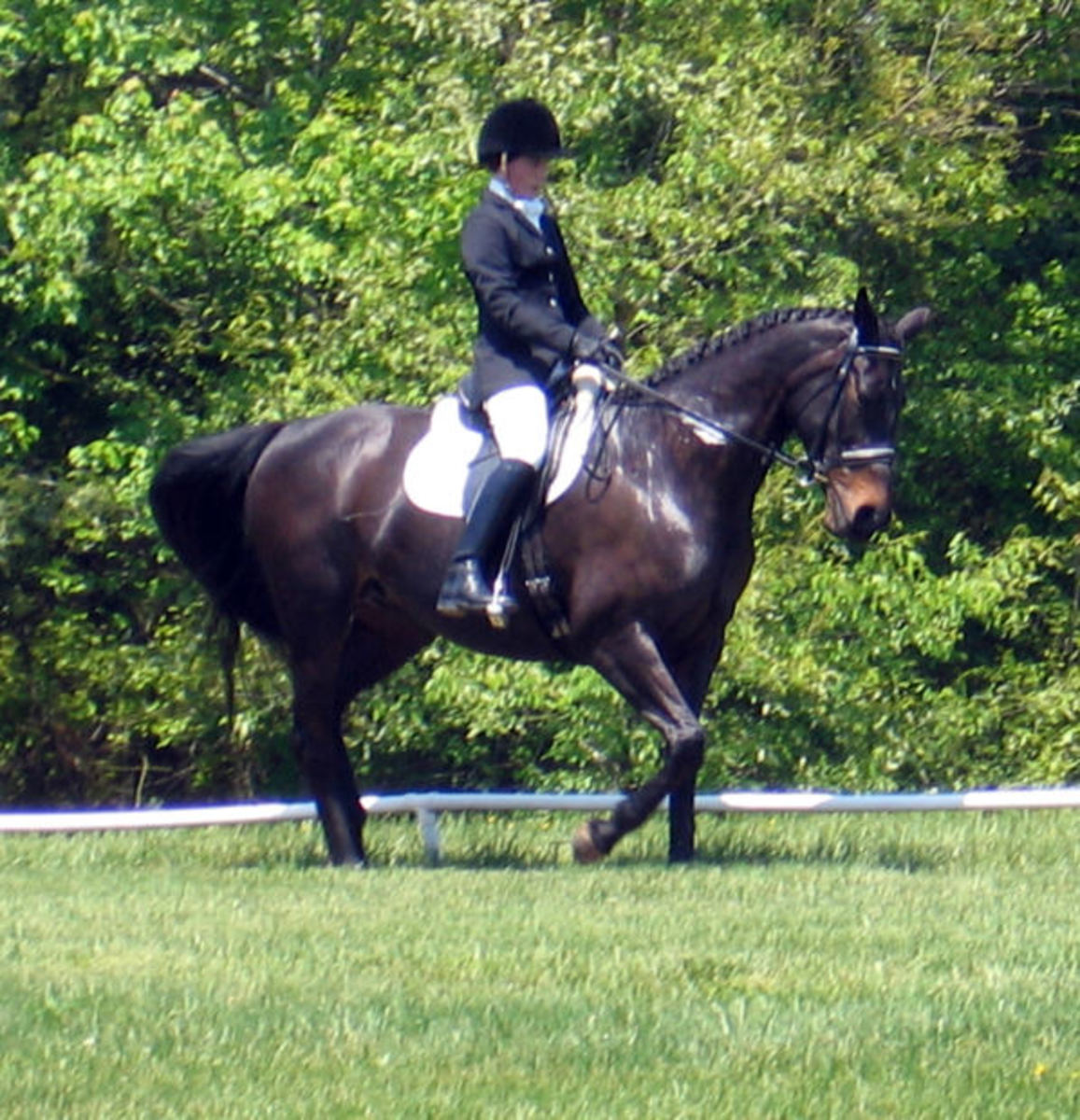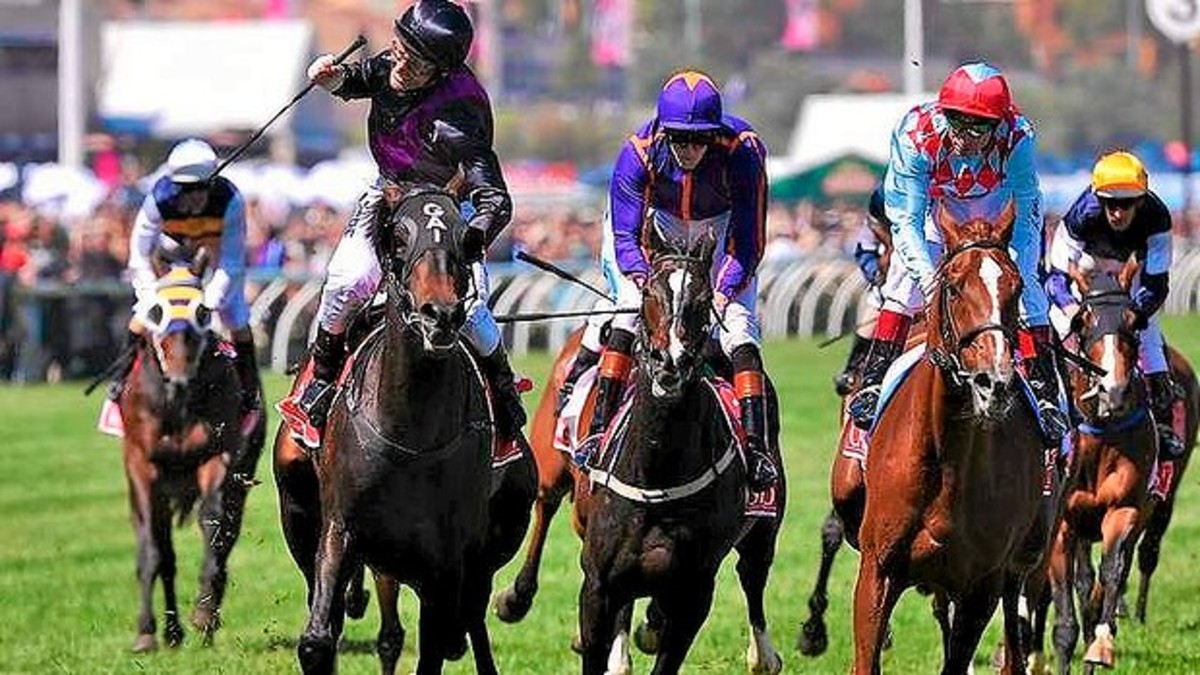Famous horse races around the world
THE MARYLAND HUNT CUP
On the last Saturday in April, thousands of American jumping enthusiasts travel long distances to Glyndon, Maryland, to picnic on a green hillside and see a race quite unlike any other in the world - a race where there is no official betting, where the judges stand on an old farm-wagon and where, until recently, there was no prize money, just a silver cup for the winner of the toughest timber race in the world.
Started in 1894 as a competition between members of the Elkridge Hunt and the Green Spring Valley Hunt, the Maryland Hunt Cup was originally restricted to amateurs but professionals are now allowed to ride (without payment).
The course of 22 four to five feet high solid timber fences (the Hunt Cup rails are made of chesnut, rounded, up to 18 inches thick and driven intolocust posts, cemented four feet into the ground!) is now Bagged over its four mile distance. No admission is charged, and parking fees go to the local fire brigade.
Although the Maryland Hunt Cup is known as the American Grand National, it was not until 1965, when Tommy Crompton Smith and Jay Trump became the first all-American winners of both the Maryland Hunt Cup and the Aintree National, that such a double victory was considered possible. For the two courses are totally unalike. Maryland fences are straight up and down and set on level ground.
In addition, it is possible to see through the fences and avoid falling or fallen runners, while the size of the field now rarely exceeds a dozen or so runners. At Aintree, a horse has to cope with huge drops, ditches, water, and the biggest hazard of all at Liverpool, loose or fallen horses, or interference from up to forty or Fifty other runners.
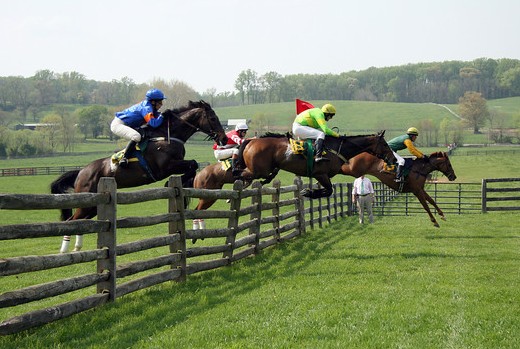
The Maryland Hunt Cup is still mainly the preserve of a few leading American equestrian families with successive generations vying with each other for the honours. In 1974, for instance, Mrs. Miles Valentine (her racing silks, decorated with shocking pink hearts are well-known in England and Ireland), her daughter Mrs. Nelson Slater and granddaughter Joy Slater were all represented in the race.
While jay Trump won the race three times, Pennsylvania has also provided its share of winners, including dual winner Morning Mac in 1970 and 1973. Local Maryland hopes are usually centred on the mounts of the McKnight family, J. W. Y. (‘Duck’) Martin Jn., the various members of the Fenwick family, and a few other sporting owners like Mrs. John D. Schapiro, wife of the President of the famous Washington International Race at nearby Laurel Park.
GRAND STEEPLE-CHASE DE PARIS
The Parisian race-track of Auteuil, elegant headquarters of French steeplechasing, is a sharp, twisting, fast track, full of surprises and a great variety of obstacles.
The course for the prestigious Grand Steeplechase de Paris covers 6400 metres (four miles) with 25 fences laid out in a figure of eight. These include the Haie du Bull Finch, a 2 ft 6 inches-high mud bank with five feet of bullrushes on top, which the horses jump through, and not over as some English horses tend to try to do when first confronted with this unique steeplechasing hazard.
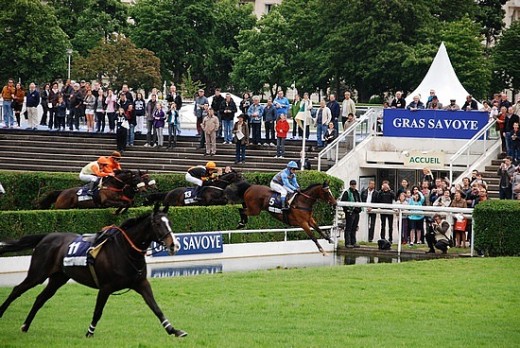
There is the Haie du Bank: a 2 ft. 6 inches-high hedge, then six strides over a raised mound and down over a small privet hedge with a 3 ft. drop. Then the Haie de la Grand Riviere, a low hedge with 18 feet of water in front of the stands. This is followed by the rail ditch, 6 ft. 6 in. of gaping open ditch before a brush fence of 5 ft. 6 in. The Haie de l'Oxer, described as two small brush fences, still looks formidable to horse and rider. And all of these have to be jumped at racing speed — and French racing speedat that.
It is hardly surprising that overseas challengers have a poor record in the Grand Steeple de Paris. The victory of Fred Winter and the ‘bridleless' Mandarin is one of the notable exceptions. Madame Hennessy's headstrong little ’chaser, winner of the Cheltenham Gold Cup, broke his bit at the fourth fence and Fred had to ride the rest of the 25—fence course with no means of stopping or steering. With the sporting help of French jockey Daumas, who helped to keep Mandarin 'boxed in’ all the way round the complicated racetrack, Fred managed to drive him home to win in front of 50,000 cheering French ‘turfiste'.
THE GRAND NATIONAL
The Grand National, the most famous steeplechase in the world, is run at Aintree on the outskirts of Liverpool in England's industrial North West. The race was founded in 1837 by a Liverpool hotelier and first run at a place called Maghull, but with the backing of the 2nd Earl of Sefton, owner of the course, it was moved to Aintree where it has been run ever since.
Since February of 1839, when Jem Mason rode home his mount Lottery after making all the running from a horse called Seventy Four, the four and a half mile, 30-fence course has changed very little. From the start, to the right of the sprawling stands near the Sefton Yard Stables, there is a long run to the first two thorn and spruce fences.
Those who survive the first mad ‘cavalry charge', gallop on towards the third, the first of Liverpoolls gaping open ditches with its tive-foot high fence. Three fences later the jockeys face the infamous Becher's Brook for the first time.
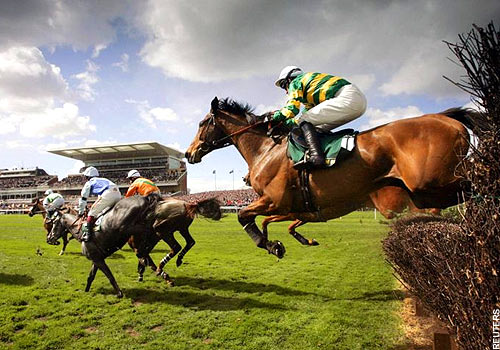
Originally a double rails with a large water-filled ditch on the far side, it was renamed Becher's Brook after Captain Becher, who served under Wellington and met his Waterloo at this fence in Lottery’s Grand National. Feared because of its huge drop on the landing side, Becher’s usually claims a number of victims, while the survivors race on towards the Canal Turn, The next problem fence is Valentine's Brook, a dark green thorn mound with a 5ft Gin brook, and then it is a straight run over fences 10, 1 1 (another formidable open ditch) and 12, another five-footer followed by a ditch. Within sight of the stands, the runners come to fence 15, The Chair, followed by the gaping Water jump in front of the stands.
Then it is out into the country again for another circuit. Most experienced National jockeys tend to follow the maxim ‘Hunt the first circuit, race-ride the second and these tactics have been followed with success on many occasions, a notable example being Tommy Smith, the American rider, who rode jay Trump to victory in the 1965 Grand National on his first visit to Liverpool.
Recommended equestrian hubs
- Famous racehorses
The greatest racehorses throughout history won races in Britain, America, France and more. The horses include Man O'war, Bold Ruler, Ribot, Vaguely Noble, Nijinsky, Brigadier Gerard and Mill Reef among others. - Famous racehorses - part two
This second instalment of famous racehorses includes Dahlia, Grundy, Pawneese, Youth, Buckpasser, Secretariat and Allez France. - Famous racehorse owners
Queen Elizabeth, grandmother of Prince William and Harry, is a passionate horse racing fan and owns a large number of horses. Manchester United manager Sir Alex Ferguson also owns racehorses, as does striker and former David Beckham team-mate Michael - The greatest horse racing jockeys
These champion riders have gone down in history as some of the best ever. They include Pat Tasffe, Fred Winter, Willie Carson and Lester Piggott, Willie Shoemaker and Yves Saint-Martin. - The greatest racehorse trainers of all-time
Fred Rimell, Vincent O'Brien and Fulke Walwyn are just some of the incredible trainers that have produced some of finest racehorses in history. Their success - and the secrets of their training methods - is what every horse racing trainer around the - Red Rum: The greatest Grand National racehorse of all time
It was only after a chance encounter in a taxi that Red Rum was bought and began his racing life training on the beach with Ginger McCain. But in a truly amazing story he went on to be the most successful racehorse at Aintree of all time with three w
This, then, is the National stage which has been brought to life each year by its own special brand of star performer, and no two National winners have ever been quite alike. Forty-two runners lined up for the 1928 Grand National, including two American challengers, Billy Barton and Burgowright, both Maryland Hunt Cup winners. But is was Easter Hero, an English horse owned by an American who turned the race into a sensation. Coming into the Canal turn, he met it completely wrong and ended up straddled across the top of the fence. The sight of this unfortunate horse stuck on top of the fence frightened off most of the other runners, including Burgowright and his Maryland pilot ‘Downey' Bonsai.
Billy Barton, ridden by English professional Tom Cullinan set the pace for the remainder, and going into the last, with only two left standing, the American horse fell to leave amateur rider Bill Dutton and Tipperary Tim, a 100/1 shot that once changed hands as a yearling for fifty guineas, with the race at their mercy. Cullinan eventually remounted to finish second. 1935 and 1936 were the years of the great Reynoldstown, and the second leg of his double in 1936 was another sensational and dramatic National.
Lord Anthony Mildmay, then Anthony Mildmay and leading National Hunt amateur, was ahead into the second last fence on his Davy jones. But just as they approached it, the bridle rein broke and Davy jones ran out, leaving Reynoldstown, also amateur-ridden by Fulke Walwyn, to go on and notch up his second Aintree victory.
Lord Mildmay, one of the great characters of steeplechasing, and the man who did most to encourage Royal support for National Hunt racing, rode in the National six times and in 1948 it looked as if he would achieve his life’s ambition on his Cromwell which started favourite. However, on the run to the last two fences, Cromwell started to go ‘backwards' and it was only later that it was known why. As a legacy of a broken neck, Mildm ay had a tendency to be struck by sudden cramp and he had to ride the courageous Cromwell throughout the last mile, almost blind, unable to lift his head. But he still managed to finish third.
As Europe talked of ‘peace in our time', Mrs. Marion Dupont Scott's diminutive Battleship, known as the American Pony, crossed the Atlantic with the intention of being the first Yankee to go into the winner`s enclosure at Aintree. Ridden by six- foot three-inch Bruce Hobbs, 17-year-old son of his English trainer, Battleship’s 15.1 hands frame was dwarfed by the mountainous Aintree fences.
jumping the last upsides of Royal Danieli, a loose horse forced the American jumper out to the far side of the course, but running neck and neck for the line Battleship stuck his head in front to become the smallest ever National winner, ridden by the youngest winning jockey. Closed during the war years, the turnstiles clicked again in 1946 at Aintree, and during the next ten years there were great National winners like Freebooter, the little mare Nickel Coin, Early Mist and Royal Tan, who made
it a double for jockey Bryan Marshall in 1953 and 1954, Quare Times, who gave Pat Taaffe his first National victory in 1955, his second coming 15 years later with Gay Trip in 1970. Then in 1956 came the tragic saga of Devon 2 Loch.
Racing to the last, Devon Loch landed just ahead of E.S.B, ridden by Dave Dick. Dick Francis and Devon Loch had only to canter home for a first Royal victory for Queen Elizabeth, the Queen Mother, when, just as they neared the winning post, Devon Loch seemed to rise in the air, then sprawled on the ground, his four legs unnaturally spread-eagled on the turf, while a tired E.S.B. plodded past him to the hollowest victory in the history of the race.
No one has ever really explained what happened to Devon Loch: he may have tried to jump an imaginary fence, he may have been suddenly frightened by the sudden roar of the crowd, checked himself and lost his balance - even Dick Francis could not explain it. But if the National has produced its share of dramas, there has been an equal degree of sensation in recent years over the course itself and the future of the greatest steeplechase in the world. For it was in 1965 that Mrs. Mirabel Topham, owner of the track for many years, first announced that Aintree was to be sold for property development.
However, Lord Sefton, whose family connection with the course goes back to Lottery, managed to step in and save the race. A record crowd turned out for the first of several 'last Grand National's' until Aintree was sold, re-sold and finally bought by the famous Ladbroke bookrnaking firm, and its future secured for the present at least.

